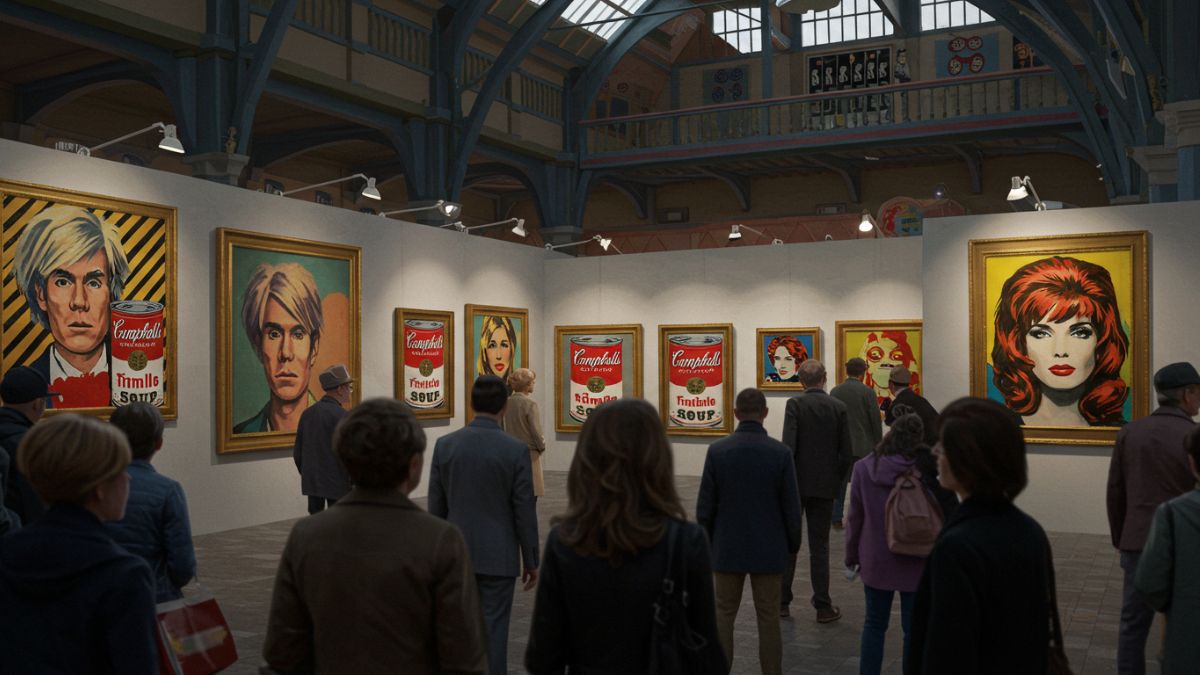Andywarhella is a name that resonates far beyond the realm of art. He was not just an artist; he was a cultural phenomenon, challenging our perceptions of fame and consumerism in ways that still ripple through society today. With his signature silkscreen techniques and vibrant color palettes, Warhol transformed everyday objects into high art, making us question what we truly value. But it wasn’t only about the art itself; it was also about the culture surrounding it—the glamour, the celebrity status—everything intertwined in what became known as “The Factory.” Dive into the mesmerizing world of Andy Warhol’s philosophy on fame, art, and consumerism to uncover how this enigmatic figure redefined modern creativity.
The Factory and the Pop Art Movement
The Factory was more than just a studio; it was a cultural hub. Located in New York City, this creative space attracted artists, musicians, and socialites alike. Here, the lines between art and everyday life blurred.
Andy Warhol transformed the landscape of contemporary art through his innovative techniques. He embraced mass production as an artistic tool, using silkscreens to replicate images like Campbell’s Soup Cans and Marilyn Monroe.
This approach challenged traditional notions of originality. Warhol’s work celebrated consumer culture while questioning its authenticity. Each piece reflected society’s obsession with fame and materialism.
At The Factory, collaboration thrived. Artists mingled freely, creating a vibrant atmosphere that fostered experimentation. This dynamic environment birthed countless iconic works within the Pop Art Movement.
Warhol’s influence reached far beyond painting; it permeated music and fashion too. His vision redefined what art could be in an increasingly commercialized world.
The Relationship Between Art and Consumerism
Andy Warhol’s work blurs the line between art and commerce, creating a fascinating dialogue about consumerism. He famously said, “In the future, everyone will be world-famous for 15 minutes.” This statement encapsulates his belief that fame itself has become a commodity.
Warhol’s art often featured everyday products like Campbell’s Soup cans and Coca-Cola bottles. By elevating these items to high art status, he challenged traditional notions of what constitutes artistic value. The mundane became extraordinary under his gaze.
This relationship with consumer culture raises questions about authenticity in art. Is it genuine if it serves commercial interests? Warhol seemed to embrace this ambiguity, suggesting that the very act of consumption could be an aesthetic experience.
His studio, known as The Factory, produced artwork at an industrial scale—mirroring mass production methods found in factories worldwide. In doing so, he questioned whether originality still mattered in an age dictated by brands and logos.
Criticisms of Warhol’s Philosophy
Critics have long debated Warhol’s take on fame and art, arguing that it blurs the lines between authenticity and commercialism. Some suggest his work promotes a superficial culture, prioritizing aesthetics over depth.
Many point out that his relentless pursuit of celebrity status undermines genuine artistic expression. They argue that by elevating mass-produced images, he risks reducing complex ideas to mere commodities.
Warhol’s repetition of subjects like Campbell’s Soup cans has also faced scrutiny. Detractors claim this approach diminishes individuality and originality in art, suggesting instead a mechanized vision.
Moreover, some believe Warhol’s fascination with fame reflects moral ambiguity. By embracing consumer culture wholeheartedly, he raises questions about the value we place on success and recognition versus true artistic merit.
These critiques highlight an ongoing tension within Warhol’s philosophy—where admiration for creativity conflicts with societal values surrounding materialism.
Legacy of Andy Warhol’s Ideas
Andy Warhol’s ideas continue to resonate in contemporary culture. His exploration of fame and art reflects our current obsession with celebrity and branding. Social media platforms amplify this, showcasing how individuals curate their lives for public consumption.
Warhol’s concept of “15 minutes of fame” feels more relevant than ever. In an age where anyone can go viral overnight, his notion challenges the permanence of artistic merit versus fleeting moments in the spotlight.
Additionally, Warhol blurred boundaries between high art and commercialism. Today’s artists often grapple with similar tensions between authenticity and marketability. This dialogue remains vital as creators navigate a landscape influenced by rapid consumer trends.
Moreover, his work inspires countless movements within pop culture—from fashion to music videos—proving that art transcends traditional mediums. The legacy left behind is not just about iconic images but also about questioning value in both art and life itself.
Conclusion:
Andy Warhol’s influence extends far beyond the realm of art. His exploration of fame, consumerism, and identity reshaped cultural conversations.
Warhol challenged traditional notions of artistry. He blurred the lines between high art and commercial enterprise, inviting everyone to reconsider what it means to be an artist.
His legacy prompts ongoing dialogue about authenticity in a world increasingly driven by image and branding.
Through his work, audiences engage with deeper themes that resonate today—our relationships with mass media and celebrity culture remain as relevant now as they were during his time.
The essence of Warhol’s philosophy encourages us to reflect on our own consumption habits. It invites us to question how we navigate fame in our daily lives within a society obsessed with superficiality.
FAQ’S
What is the significance of The Factory?
The Factory was more than just a studio; it was a cultural hub. It symbolized collaboration and creativity. Many artists thrived in this environment, contributing to the vibrant pop art movement.
How did Warhol view consumerism?
Warhol embraced consumer culture, seeing beauty in everyday objects. He believed that art should reflect society’s interests and desires rather than stand apart from them.
Was Warhol criticized for his approach?
Yes, some critics argue he commodified art by reducing it to mere products. This has led to debates about authenticity versus commercial appeal within the art world.
